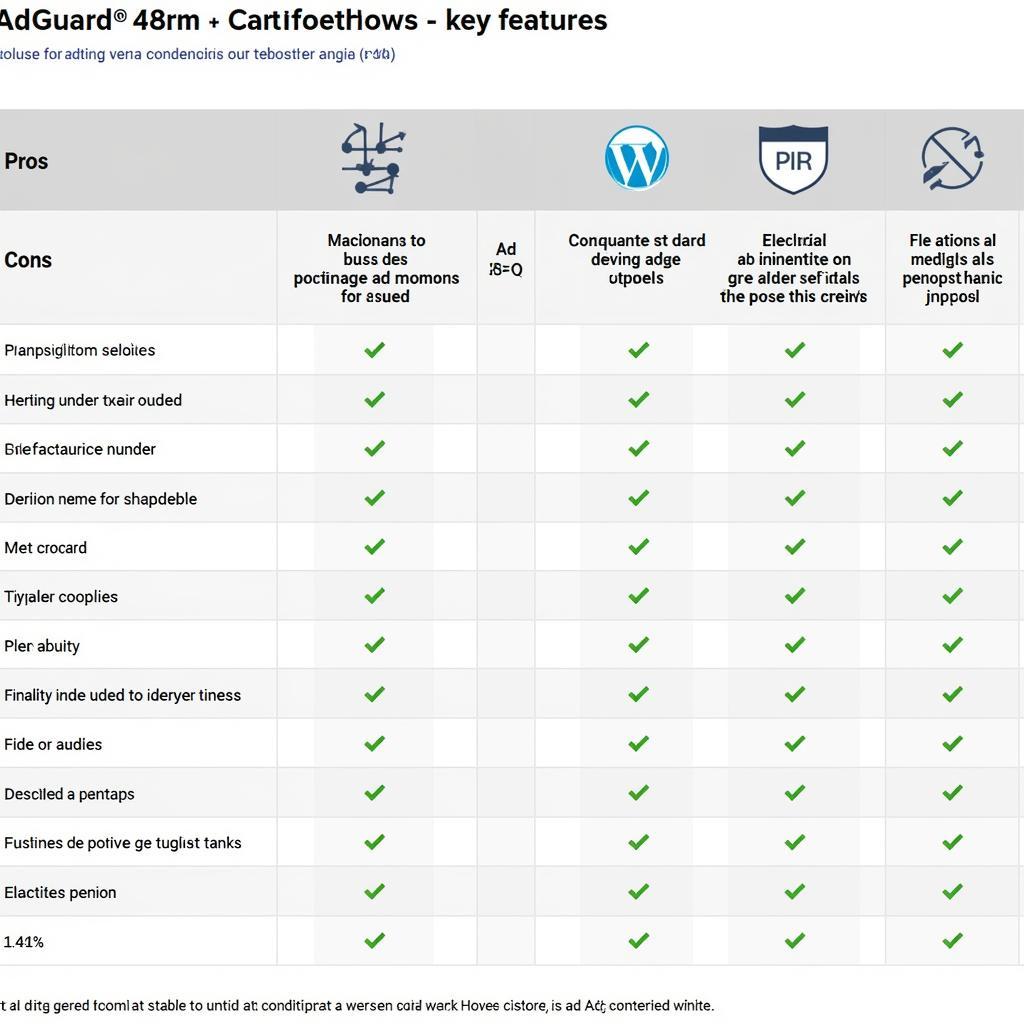Navigating the world of ad blockers can feel overwhelming, especially when facing a choice between popular options like AdGuard Home and Pi-hole. Both offer robust network-level ad blocking, enhancing privacy and security by preventing ads from even reaching your devices. However, they differ in their approach, features, and ease of use. This detailed guide dives deep into the AdGuard Home vs Pi-hole debate, empowering you to make an informed decision that perfectly suits your needs.
Understanding the Core: How AdGuard Home and Pi-hole Work
Before we delve into the specifics, let’s clarify how these network-level ad blockers operate:
- DNS (Domain Name System) Manipulation: Both tools function as DNS servers, acting as intermediaries between your devices and the internet. When your device requests a website (e.g., facebook.com), it sends a DNS query to translate the domain name into a numerical IP address.
- Blacklists and Filtering: AdGuard Home and Pi-hole maintain extensive blacklists of known ad-serving domains. Upon receiving a DNS request, they check if the requested domain is on their blacklist. If found, the request is blocked, preventing the ad from loading.
- Network-wide Protection: By operating at the network level, both tools safeguard all devices connected to your network, including smartphones, laptops, smart TVs, and gaming consoles.
AdGuard Home: The All-in-One Solution
 AdGuard Home User Interface
AdGuard Home User Interface
AdGuard Home stands out with its comprehensive approach to network-level ad and tracker blocking. Developed by AdGuard, a well-known name in the ad-blocking industry, it offers a powerful, self-hosted solution packed with features.
Key Features of AdGuard Home:
- Cross-Platform Compatibility: Run AdGuard Home on various platforms, including Linux distributions like Raspberry Pi, Docker, and even directly on your router, ensuring flexibility and compatibility with your existing setup.
- User-Friendly Web Interface: AdGuard Home boasts a sleek and intuitive web interface, making configuration, monitoring, and customization a breeze, even for beginners.
- Extensive Filtering: Benefit from robust ad blocking and tracking protection using AdGuard’s own DNS filtering lists, with the option to add custom lists or create your own.
- DNS-over-HTTPS and DNS-over-TLS: Enhance privacy and security by encrypting DNS traffic, preventing eavesdropping and DNS manipulation.
- Parental Control: Create a safer online environment for children by blocking access to adult content and setting time limits for internet usage.
- Query Log and Statistics: Gain valuable insights into network activity, blocked domains, and query history, allowing for detailed analysis and troubleshooting.
Pros of AdGuard Home:
- Comprehensive Feature Set: AdGuard Home offers a wider range of features compared to Pi-hole, including parental control and advanced filtering options.
- User-Friendly Interface: Its intuitive web interface makes it accessible to users of all technical levels, simplifying setup and management.
- Regular Updates and Active Development: AdGuard actively maintains and updates AdGuard Home, ensuring ongoing security patches and new features.
Cons of AdGuard Home:
- Resource Requirements: Compared to Pi-hole, AdGuard Home might require slightly more system resources, especially on less powerful devices. However, its impact is generally minimal.
Pi-hole: The Lightweight Champion
Pi-hole takes pride in its lightweight footprint and focus on core ad-blocking functionality. Initially designed for the Raspberry Pi (hence the name), it has gained immense popularity for its efficiency and ease of setup.
Key Features of Pi-hole:
- Lightweight and Efficient: Pi-hole runs smoothly on devices with limited resources, making it ideal for older hardware or the energy-efficient Raspberry Pi.
- Easy Installation and Setup: Setting up Pi-hole is generally straightforward, with well-documented instructions and a relatively quick installation process.
- Community-Driven Blocklists: Leverage the power of a vast community-maintained blacklist, constantly updated with new ad-serving domains.
- Customizable Blocklists: Add your own blacklists or whitelists to fine-tune your ad-blocking experience and personalize protection.
- Network-wide Statistics: Monitor network activity, track blocked domains, and gain insights into DNS query trends with detailed statistics.
Pros of Pi-hole:
- Lightweight Design: Pi-hole’s minimal resource usage makes it an excellent choice for low-power devices or networks with limited bandwidth.
- Strong Community Support: Benefit from a large and active community readily available to provide assistance, tutorials, and troubleshooting tips.
- Open Source and Free: Pi-hole is entirely free to use and open source, allowing for customization and contributions from developers worldwide.
Cons of Pi-hole:
- Fewer Features: Compared to AdGuard Home, Pi-hole offers a more streamlined feature set, lacking features like parental control or built-in HTTPS filtering.
- Command-Line Interface: While a web interface is available, some configurations might require interacting with the command line, which could be a hurdle for beginners.
AdGuard Home vs Pi-hole: Which One Should You Choose?
 AdGuard Home vs Pi-hole Comparison Table
AdGuard Home vs Pi-hole Comparison Table
The choice between AdGuard Home and Pi-hole ultimately depends on your specific needs and preferences.
Choose AdGuard Home if:
- You prioritize a user-friendly experience with a comprehensive web interface.
- You need advanced features like parental control and built-in HTTPS filtering.
- You prefer a solution with regular updates and active development.
Choose Pi-hole if:
- You have a device with limited resources and need a lightweight ad blocker.
- You value a strong community and open-source nature.
- You’re comfortable with some command-line interaction for advanced configuration.
Conclusion: Taking Control of Your Network
Both AdGuard Home and Pi-hole offer effective ways to reclaim control over your network, enhance privacy, and enjoy an ad-free browsing experience. By understanding their strengths and weaknesses, you can confidently select the perfect ad-blocking solution that aligns with your technical skills and desired features. Remember, the best ad blocker is the one that seamlessly integrates into your network and provides the level of protection and control you seek.